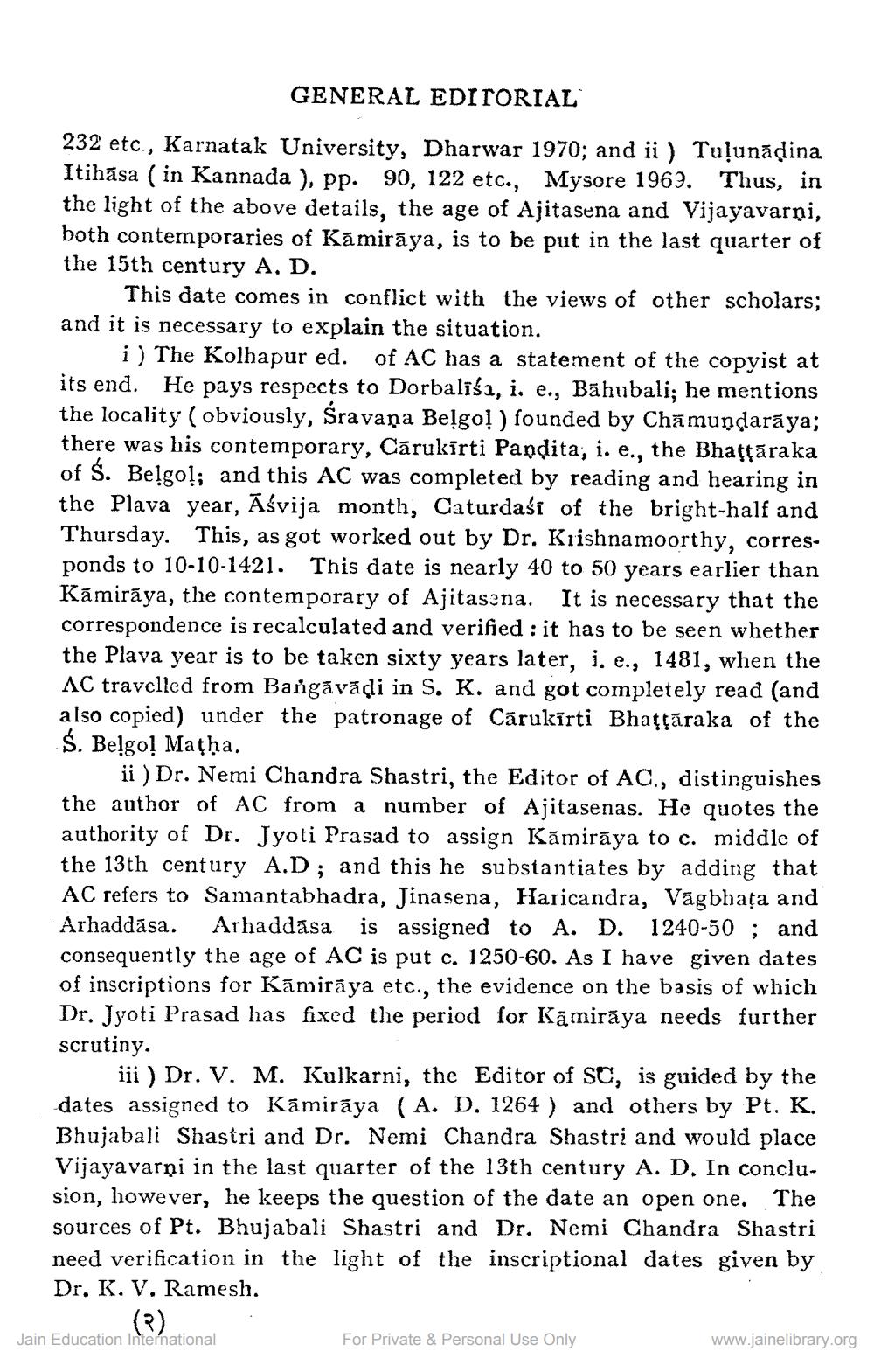________________
GENERAL EDITORIAL
232 etc., Karnatak University, Dharwar 1970; and ii ) Tuļunādina Itihasa ( in Kannada ), pp. 90, 122 etc., Mysore 1963. Thus, in the light of the above details, the age of Ajitasena and Vijayavarni, both contemporaries of Kāmirāya, is to be put in the last quarter of the 15th century A. D.
This date comes in conflict with the views of other scholars; and it is necessary to explain the situation.
i) The Kolhapur ed. of AC has a statement of the copyist at its end. He pays respects to Dorbalīša, i. e., Bāhubali; he mentions the locality (obviously, Sravana Belgo?) founded by Chāmundaraya; there was his contemporary, Cărukīrti Pandita, i. e., the Bhattāraka of $. Belgo!; and this AC was completed by reading and hearing in the Plava year, Āśvija month, Caturdaśí of the bright-half and Thursday. This, as got worked out by Dr. Krishnamoorthy, corresponds to 10-10-1421. This date is nearly 40 to 50 years earlier than Kāmirāya, the contemporary of Ajitasena. It is necessary that the correspondence is recalculated and verified : it has to be seen whether the Plava year is to be taken sixty years later, i. e., 1481, when the AC travelled from Bangāvādi in S. K. and got completely read (and also copied) under the patronage of Cárukīrti Bhatļāraka of the S. Belgo! Matha.
ii ) Dr. Nemi Chandra Shastri, the Editor of AC., distinguishes the author of AC from a number of Ajitasenas. He quotes the authority of Dr. Jyoti Prasad to assign Kâmirāya to c. middle of the 13th century A.D; and this he substantiates by adding that AC refers to Samantabhadra, Jinasena, Haricandra, Vägbhata and Arhaddása. Arhaddása is assigned to A. D. 1240-50 ; and consequently the age of AC is put c. 1250-60. As I have given dates of inscriptions for Kāmirāya etc., the evidence on the basis of which Dr. Jyoti Prasad has fixed the period for Kâmirāya needs further scrutiny.
iii) Dr. V. M. Kulkarni, the Editor of SC, is guided by the dates assigned to Kāmirāya (A. D. 1264 ) and others by Pt. K. Bhujabali Shastri and Dr. Nemi Chandra Shastri and would place Vijayavarni in the last quarter of the 13th century A. D. In conclu. sion, however, he keeps the question of the date an open one. The sources of Pt. Bhujabali Shastri and Dr. Nemi Chandra Shastri need verification in the light of the inscriptional dates given by Dr. K. V. Ramesh.
Jain Education International
For Private & Personal Use Only
www.jainelibrary.org




